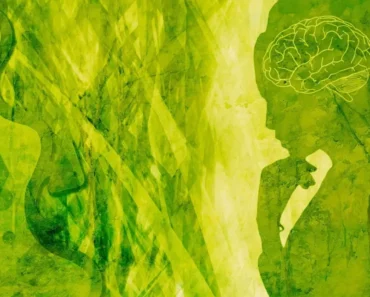Emojis, while enhancing digital expression, can inadvertently obscure genuine emotional states. This guide explores how Emojis Mask Mental Health struggles, delving into why these seemingly innocuous symbols sometimes hide deeper issues and offering strategies for fostering authentic connection.
The Digital Smile: Understanding How Emojis Mask Mental Health
Digital communication has become the primary mode of interaction for many, especially across generations. Emojis, those small visual symbols, have seamlessly integrated into our texts, social media posts, and emails. They add tone, emotion, and nuance that plain text often lacks. However, this convenience and expressive shorthand carry a hidden cost. The pervasive use of emojis can inadvertently become a tool for concealment. They can create a facade that makes it harder to truly understand someone’s inner world, leading to a phenomenon where Emojis Mask Mental Health struggles.
In a culture that often encourages positivity and discourages vulnerability, emojis offer an easy way to present a cheerful front. A simple smiling face or a thumbs-up can end a conversation, signal agreement, or feign contentment without requiring deeper emotional engagement. This rapid, superficial exchange can prevent the expression of genuine distress, sadness, or anxiety. Individuals might rely on emojis to avoid difficult conversations or to bypass sharing complex feelings.
Recognizing this subtle shift is crucial for fostering authentic connections. It involves looking beyond the surface-level emoji. It means understanding the context of communication. It prompts us to delve deeper into interactions. This awareness helps uncover when Emojis Mask Mental Health issues, ensuring we provide genuine support rather than accepting a superficial positive signal.
Why Emojis Mask Mental Health: The Mechanics of Digital Concealment
Several factors inherent in emoji use and digital communication contribute to their ability to mask mental health struggles. These mechanisms create a gap between expressed emotion and true feeling.
Brevity and Lack of Nuance: The Quick Fix of Emotion
Emojis offer brevity. They replace lengthy explanations or complex emotional descriptions. A single happy face can signify “I’m fine,” even when the sender feels anything but. This quick fix of emotion prevents deeper articulation. It discourages the exploration of nuanced feelings. The recipient, seeing the emoji, might assume everything is well, inadvertently accepting a superficial signal. This reduces the need for genuine self-expression.
This simplification of emotion means individuals may not fully process or articulate their own feelings. It also leaves no room for questions or deeper engagement from the recipient. This brevity is a primary way Emojis Mask Mental Health.
Social Pressure for Positive Presentation: The Digital Performance
Social media and digital platforms often foster a culture of positive presentation. Users feel pressure to portray an idealized version of their lives. Emojis become tools in this performance. A string of laughing faces might accompany a post, even if the sender feels anxious or overwhelmed. This constant projection of positivity creates a barrier to authenticity. Individuals fear judgment or misunderstanding if they express negative emotions.
This pressure encourages concealment. It makes it harder for others to recognize true emotional states. It reinforces the idea that vulnerable feelings should not be shared openly, leading to Emojis Mask Mental Health.
Avoiding Difficult Conversations: The Easy Escape
Emojis can serve as an easy escape from difficult conversations. Instead of engaging in a nuanced discussion about personal struggles, a sender might use a sad face emoji followed by a quick “I’m okay” or “It’s nothing.” This behavior diverts attention from the real issue. It avoids the effort and vulnerability required for genuine emotional sharing. The convenience of an emoji can short-circuit the path to meaningful support.
This avoidance mechanism delays necessary conversations. It prevents individuals from receiving the help they might desperately need.
Misinterpretation and Ambiguity: The Unspoken Gaps
While emojis add tone, they can also lead to misinterpretation. A sender might use an emoji to convey a specific feeling, but the recipient interprets it differently, especially without additional context. This ambiguity creates communication gaps. The recipient might assume understanding, missing the true emotional state. This unspoken gap leaves mental health struggles unnoticed.
The lack of accompanying non-verbal cues (like tone of voice or facial expressions) exacerbates this problem. The meaning of an emoji can easily be misinterpreted, preventing genuine connection.
The Impact: When Emojis Mask Mental Health Struggles
The subtle yet pervasive phenomenon of emojis masking mental health struggles carries significant consequences for individuals and their relationships. These impacts can delay support and deepen isolation.
Delayed Recognition and Intervention
When individuals consistently use emojis to mask their true feelings, friends, family, or colleagues might fail to recognize signs of distress. This delays crucial recognition and intervention. Without clear signals, others assume everything is fine, leaving the struggling individual feeling unseen and unheard. This delay can exacerbate mental health conditions, making them harder to treat later.
Increased Isolation Despite Connectivity
Paradoxically, constant digital communication, when superficial, can lead to increased isolation. Individuals might engage in numerous emoji-laden exchanges, yet feel profoundly alone. The absence of genuine emotional depth in these interactions fosters a sense of disconnect. They might feel like no one truly understands their inner struggles, even while maintaining a constant online presence.
Erosion of Trust and Authenticity in Relationships
When one partner consistently uses emojis to hide their true feelings, it can inadvertently erode authenticity in the relationship. Over time, this lack of genuine emotional sharing can lead to a shallower bond. Trust in open communication might diminish if one person feels their partner is not being fully transparent. This can create a subtle, yet persistent, emotional distance, impacting the very foundation of intimacy.
Unmasking Emotions: Strategies for Authentic Connection
Countering the tendency for Emojis Mask Mental Health requires conscious effort and intentional shifts in communication habits. These strategies foster deeper, more genuine interactions.
1. Prioritize Richer Communication Mediums
For important or sensitive conversations, move beyond texting and emojis. Opt for phone calls or face-to-face interactions. These mediums allow for tone of voice, facial expressions, and body language, which are crucial for conveying and understanding complex emotions. Reserve texting for quick, factual exchanges. This intentional choice reduces ambiguity and fosters deeper connection.
2. Practice Emotional Literacy: Name Your Feelings
Develop your emotional vocabulary. Instead of relying on a single emoji, try to articulate precisely how you feel using words. This practice helps you understand your own emotions better. It also enables others to genuinely understand your state. Encourage others to do the same. This moves communication from superficial signals to authentic expression.
3. Create Safe Spaces for Vulnerability
Foster environments where vulnerability feels safe and encouraged. With trusted friends, family, or partners, explicitly state that it is okay to not be okay. Lead by example by sharing your own struggles or uncertainties when appropriate. This acceptance creates an atmosphere where genuine emotional expression is welcomed, reducing the need for concealment. This directly counters the trend of Emojis Mask Mental Health.
4. Ask Open-Ended Questions and Listen Actively
When communicating with others, especially if you suspect they are struggling, ask open-ended questions that invite more than a one-word or emoji response. For example, “How are you really feeling about that?” or “What’s been on your mind lately?” Then, practice active listening, giving your full, undivided attention. This encourages deeper sharing and demonstrates genuine care.
5. Set Boundaries with Emoji Use: Intentional Expression
Be mindful of your own emoji use. While emojis add fun, avoid using them as a default to avoid expressing actual emotions. Use them to enhance, not replace, verbal communication. If you are struggling, resist the urge to use only positive emojis. Instead, use a text that briefly acknowledges difficulty, or choose an emoji that more accurately reflects a mixed feeling. This intentional use helps prevent Emojis Mask Mental Health.
6. Educate on the Limitations of Digital Communication
Discuss with friends and family the inherent limitations of digital communication, especially texting. Explain how non-verbal cues are missing and how easily misunderstandings can arise. This shared understanding can foster more patient and empathetic interactions. It encourages a collective move towards more authentic connection.
7. Seek Professional Help When Needed
If you consistently find yourself masking your mental health struggles, or if you suspect a loved one is doing so, seek professional support. A therapist or counselor provides a safe, confidential space to explore emotions. They offer strategies for healthy coping and communication. They can help individuals articulate feelings they might struggle to express even to themselves. This professional guidance is invaluable.
Related Posts: Why Silent Calls Are the New ‘I Need Help’ Signal
Budgeting for Authentic Connection: Investing in Well-being
Fostering genuine emotional expression and connection does not require a large budget. Many effective strategies are free or low-cost, proving that investing in authentic relationships is accessible to everyone. This also means you can counteract how Emojis Mask Mental Health without significant financial strain.
Free Strategies: Prioritizing Time and Presence
Many powerful strategies for authentic connection cost nothing. Practicing active listening, setting aside tech-free time for conversations, expressing feelings using “I” statements, and simply being present with loved ones are all free. These behavioral shifts are highly effective in building deeper bonds. They emphasize that your time and attention are the most valuable investments.
Affordable Tools: Books and Apps for Emotional Literacy
Numerous apps offer features for mood tracking, journaling, or mindfulness exercises (some free, some subscription-based, usually under $10/month). Books on emotional intelligence, communication skills, or relationship building also provide valuable insights, often available from libraries or as affordable e-books. These tools support your efforts without significant expense.
Professional Support: A Worthwhile Investment in Health
If emotional masking or communication difficulties severely impact your mental health or relationships, professional therapy is a worthwhile investment. Costs vary. Many therapists offer sliding scale fees. Health insurance often covers a portion of therapy costs. Online therapy platforms can also be more affordable than in-person sessions (typically $60-$150/session). This investment provides personalized guidance for lasting change.
Caring for Your Emotional Landscape: Nurturing Well-being
Maintaining emotional well-being requires ongoing self-awareness and consistent effort. Nurturing your emotional landscape allows for more authentic expression and healthier relationships. This continuous care helps counteract the tendency for Emojis Mask Mental Health.
Regular Emotional Check-ins: Self-Reflection
Periodically assess your own emotional state. How often do you feel truly heard and understood? Are you genuinely expressing your feelings, or are you masking them? These self-check-ins help identify patterns of emotional concealment. They allow you to adjust your communication habits proactively. This regular review helps maintain emotional authenticity.
Practice Mindfulness and Self-Compassion
Engage in mindfulness exercises to become more attuned to your emotions without judgment. Practice self-compassion, recognizing that it is okay to feel difficult emotions. Avoid self-criticism for not always being “happy” or “positive.” This acceptance fosters a healthier internal environment for emotional expression. It reduces the internal pressure to mask feelings.
Cultivate a Support Network for Vulnerability
Actively cultivate a support network of trusted individuals with whom you feel safe being vulnerable. This could be a partner, a close friend, a family member, or a support group. Share your true feelings with these individuals. This practice reinforces that authentic expression is safe and valued. This helps prevent Emojis Mask Mental Health in the long term.
Latest Innovations in Digital Emotional Wellness
The technology industry increasingly recognizes the impact of digital habits on mental health. New innovations offer tools and features designed to support emotional well-being and encourage more authentic expression.
AI-Powered Mood Tracking and Journaling Apps
Sophisticated apps now use AI to help users track their moods, identify emotional patterns, and engage in guided journaling. Some can analyze text input to provide insights into emotional states. While these tools do not provide therapy, they empower individuals to gain greater self-awareness of their feelings, which is the first step towards expressing them authentically. This helps users understand themselves better.
Digital Well-being Features and Notification Management
Smartphone operating systems include advanced screen time tracking and notification management features. Users can monitor app usage, set daily limits, and schedule “downtime.” These tools provide data to raise awareness about digital habits that might lead to emotional masking. They offer automated ways to enforce personal boundaries. This helps reduce the constant digital pull.
Platforms for Authentic Connection and Support
New digital platforms focus on fostering genuine connection rather than superficial interaction. These might include niche communities based on shared vulnerabilities or apps designed specifically for peer support. Some platforms offer anonymous emotional sharing spaces. They aim to create safer online environments for authentic expression, countering the tendency for Emojis Mask Mental Health.
Making Your Final Decision: Prioritizing Authentic Expression
Understanding how Emojis Mask Mental Health struggles is a crucial step toward cultivating a more authentic and fulfilling emotional life. Focus on strategies that promote genuine expression, open communication, and true connection.
Prioritize moving beyond superficial digital interactions. Choose richer communication mediums for important conversations. Consciously engage in active listening when others speak. This fundamental shift enhances mutual understanding.
Consider developing your emotional literacy. Naming your feelings accurately helps both you and others comprehend your true state. Embrace vulnerability in safe relationships. This builds deeper trust.
Do not overlook the power of leading by example. Model authentic emotional expression. Create environments where others feel safe to be themselves. This encourages genuine interaction.
Remember, the goal is not to eliminate emojis, but to use them thoughtfully. When you prioritize authentic expression, you foster stronger bonds and protect your mental well-being from digital concealment.
Unmasking Emotions: Cultivating Authentic Connection
The pervasive use of emojis can inadvertently mask mental health struggles, creating a subtle barrier to genuine understanding. By recognizing this phenomenon and adopting intentional communication strategies, you can foster deeper, more meaningful relationships.
Take time to reflect on your own digital habits. Consider how your emoji use might impact your emotional transparency. Remember that authentic connection thrives on vulnerability and honest expression.
As you navigate the complexities of digital communication, remain committed to prioritizing genuine emotional sharing. Your efforts will lead to stronger bonds and improved well-being.
By applying these insights, you empower yourself to communicate with greater authenticity. You ensure that your true feelings are seen and heard, fostering profound connections that move beyond the surface.
Frequently Asked Questions About How Emojis Mask Mental Health
How do Emojis Mask Mental Health struggles?
Emojis can mask mental health struggles by providing a quick, superficial way to express emotion without depth. They cater to a social pressure for positivity, allow avoidance of difficult conversations, and can be easily misinterpreted, leading to genuine feelings going unnoticed.
What is the impact of Emojis Masking Mental Health?
The impact includes delayed recognition of distress, increased isolation despite digital connectivity, and an erosion of authenticity and trust in relationships. It makes it harder for individuals to receive timely support for their struggles.
What can I do to encourage more authentic communication?
Prioritize richer communication mediums like phone calls or in-person conversations. Practice emotional literacy by using words to name feelings. Create safe spaces for vulnerability. Ask open-ended questions. And set boundaries for emoji use, encouraging intentional expression.
Should I stop using emojis completely?
No, stopping emoji use completely is not necessary. The goal is mindful use. Use emojis to enhance, not replace, verbal communication. Be aware of when and how you use them to ensure they genuinely reflect your feelings rather than hiding them.
How can I tell if someone is using emojis to mask struggles?
Look for inconsistencies between their emoji use and other cues (e.g., general mood, changes in behavior). If positive emojis accompany vague answers, frequent “I’m fine” responses, or a lack of detail about their well-being, it might signal masking. Encourage deeper conversation.





